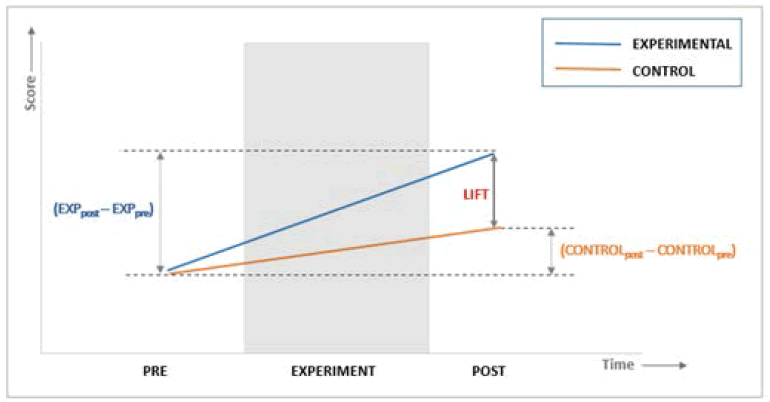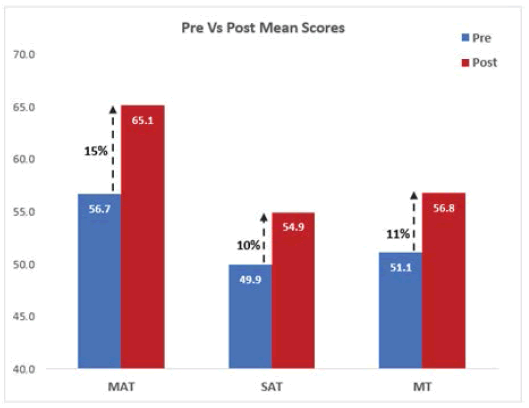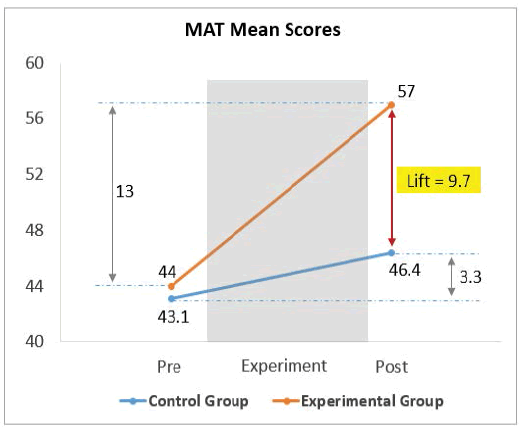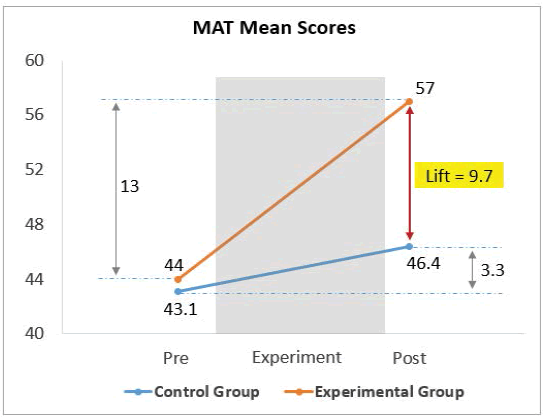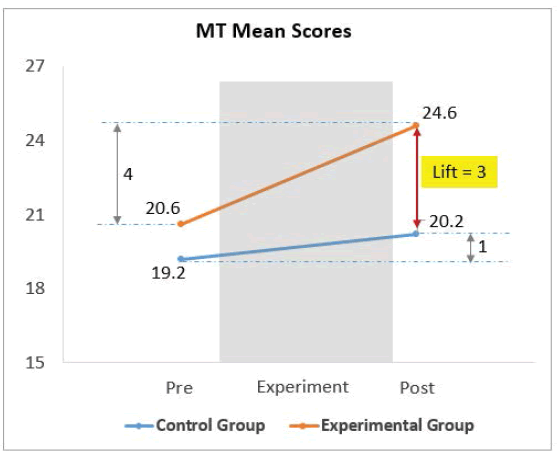Research - International Journal of Medical Research & Health Sciences ( 2021) Volume 10, Issue 8
Effects of Guided Recitation of Pradhnyavivardhan Stotra on Memory, Mental and Scholastic Abilities among Growing Children
Nitin S More, US Kakade, Pushkraj D Sonwane, Prajakta T Deshmukh* and Rajan N PangulPrajakta T Deshmukh, Akhil Bharatiya Shree Swami Samarth Gurupeeth Trimbakeshwar, Nashik, India, Email: drprajakta31@gmail.com
Received: 23-Jul-2021 Accepted Date: Aug 24, 2021 ; Published: 31-Aug-2021
Abstract
Many researches and studies have shown that meditation and yogasanas help in enhancing memory and other cognitive skills in an individual, strengthening his/her overall mental abilities. Few studies are also available which states that chanting of vedic mantras helps in improving mental abilities, but no definite study is available showcasing the effects of a particular stotra like Pradhnyavivardhan stotra on mental and scholastic abilities especially among growing children. This study investigated the effects of guided recitation of Pradhnyavivardhan stotra on several components of mental ability like memory, intelligence, understanding, evaluation, reasoning skills, judgement, responsiveness, recognition skills and speed and accuracy of recollection. The experimental study was conducted at 2 School premises in Pune, India. Two different experimental methodologies were implemented at these two premises, which comprised of pre vs. post experiment results and difference of difference between the mean test scores technique. The results showed a significant improvement among the subject group who were exposed to a guided recitation of Pradhnyavivardhan stotra. Further, registered clinical trial with randomized control study design on vedic mantras might be an add on evidence for the existing results of this study.
Keywords
Pradhnyavivardhan stotra, Memory, Cognition, Scholastic abilities, Mantra, Spiritual
Introduction
Vedic chanting is a valuable spiritual practice explored from rich and ancient Indian culture. This ancient tradition of reciting or chanting Vedic hymns was passed from many generations till existing one in form of an oral transition. Vedas and Puranas comprise a vast stock of Sanskrit mantras, stotras, and philosophical doctrines and ritual incantations developed and composed centuries ago. It is known, but only by experiences and observations that, reciting various mantras and stotras have beneficial effects on the physical and mental health of an individual, simultaneously empowering the components of his/her cognitive process. Various studies, observations, and experiences have proven the utility of chanting stotra-mantra in the enhancement of various aspects of our personality-physical, psychological and mental [1,2]. At the same time, many scholars studied that regular practicing of yoga, pranayama, and meditation has a significant influence on cognition and memory [3-5]. Though many studies are available today on mantra recitations and their effects on overall psychological and physical health, very few studies show the effects of mantras on mental abilities and soft skills like judgment, perception, reasoning, responsiveness, readiness, speed and accuracy of perception, sequencing and counting, and other memory components, which are crucial constitutes of the learning process. This paves a way out to explore the effects of stotra on these mental aspects which play a vital role, in particular during the scholastic phase of an individual. We found many scientific studies on various mantra and stotras which enhances the cognitive ability and memory of school children [6-8]. No study has yet determined the effects of such a powerful and well-acclaimed stotra like Pradhnyavivardhan stotra on mental and scholastic skills of an individual particularly of the growing age (10-15 years).
Pradhnyavivardhan stotra is drafted in Sanskrit which is a powerful ancient language. Pradhnyavivardhan stotra is given in Rudrayamal Tantra [9]. The stotra is dedicated to the worship of Skanda commonly known as Lord Kartikeya, the elder son of Parvathi and Lord Shiva. In Skanda Purana, a detailed description of Lord Kartikeya is described. This stotra, written by Skanda himself, is believed to be credited towards developing pradhnya-which means wisdom (buddhi). The name explains the meaning of Pradhnyavivardhan which is pradhnya meaning wisdom and vivardhan means aggrandizement i.e. to empower. The stotra is in the Sanskrit language, having 28 very highly worshiped and auspicious names of Lord Kartikeya. During the ancient period, rishis used to recite Pradhnyavivardhan stotra to enhance their memory power and intelligence.
Literature Review
Our Vedic culture has a significant offering that potentially can positively affect our lifestyle. A decent amount of research has been accomplished to scientifically prove such Vedic claims. Our team also reviewed a wide literature to motivate this research that aims to narrow down the gap between science and spirituality.
Research has shown that learning Sanskrit text expands the brain’s grey matter in terms of volume and density, increases cortical thickness, increases the bilateral temporal cortices, anterior cingulate cortex, and the hippocampus, a region associated with long and short term memory, and also increases the area of the brain related to language [10]. Some of the studies intend to show structural and functional benefits of mantra chanting by using Magnetic Resonance Image (MRI) techniques that include activation of inferior frontal gyrus, prefrontal cortex, limbic and superior parietal area, middle cortex, and precentral cortex and also shows an increase in the connections between grey matter and white matter which is related to higher intellectual functions [11].
It was also found in the literature that the sound of mantras directly impacts several human functions because of the typical acoustics and a characteristic frequency spectrum they cover [12]. It is said that self-created sounds such as chanting will cause the left and right hemispheres of the brain to synchronize. There are several different sciences behind mantra chanting; some of these are the “hard” science-physics, psycho-acoustics, etc. while the others are spiritual such as the different yogic practices that work with sound [12]. Dr. Alfred Tomatis in his study has utilized the sounds of Gregorian Monks to stimulate the ears, brain, and nervous systems of clients. He found that certain sounds that are particularly high in vocal harmonics will stimulate and charge the cortex of the brain and the nervous system [13]. Research has concluded that the consequences of divine mantra facilitate the excellence of functions of physiological factors like Vata, Dosha, and Agni and psychological factors like manas (mind) and buddhi (Intellect) [14]. Chanting mantra results in stabilization of brain, removal of worldly thoughts and increase of energy indirectly helps in keeping the mind alert and sharpening the intellect [15].
Our brain requires more oxygen than any other organ in the body and for the brain to function efficiently an adequate supply of oxygen is essential. Since recitation of stotras is accompanied by systematic rhythmic deep breathing, it brings in a surplus supply of oxygen, which helps to sharpen focus, improve concentration and make a person more enthusiastic. Guided chanting of stotras along with rhythmic breathing patterns helping to oxygenate the brain can reduce heart rate and assist in creating calm brainwave activity. Additionally, certain chants have significant positive effects on systolic and diastolic pressure, pulse rate, depression, anxiety, and stress that make an individual more functional as elaborated in a study [16].
It is believed that wellness is a direct result of how well stress is managed on an ongoing basis. Stress is a product of dissatisfaction and frustration and may lead to many ailments. Dr. Balaji Deekshitalu, et al. demonstrated various effects of chanting on physical as well as mental health and overall well-being [17]. The research also proved that regular chanting induces relaxation, stress relief, inner peace, harmony in daily work, and positive thinking [18]. There are also studies proving scientifically that regular recitation of mantras reduces pulse rate that helps to minimize stress and anxiety, thus enhancing performance, learning, and memory [19]. Reciting mantras also helps to purify speech by keeping a constant spiritual connection and mindfulness, thus allowing energy to focus on maintaining body wellness [20].
Constructive effects of mantra recitation on two very important mental abilities-memory and sustained attention among School children are demonstrated by various studies that motivate our research team to conduct the present study [21,22]. The fast modern lifestyle and challenges to meet the ever-increasing expectations of parents and society have resulted in mental pressure and a burden on the young minds of growing children. Recitation of Pradhnyavivardhan stotra has the potential to improve mental conditioning, memory, and scholastic skills therefore, it is essential to study its effects on growing children. Thus, this study has been undertaken to examine the facts acclaimed about this Pradhnyavivardhan Stotra using systematic research and proven analysis.
Methodology
The experiment was conducted at two School premises viz. Barne School, Pune, India (Group I) and Gurukul School, Pune, India (Group II). For Group I and Group II, two different techniques along with few other variations including sample size and length of the experiment was implemented. This is discussed in the following section. The frequency and intensity of chanting were kept the same at both places.
The Methodology Followed for Group I
A simplistic pre vs. post comparison technique was implemented. The duration of the experiment was long term where the guided recitation of Pradhynavivardhan Stotra was carried out for 150 days and 11 times per day. In the beginning, samples were subjected to standard tests, and their scores were recorded before the experiment as pre-test scores. The chanting experiment was conducted under the vigilance of volunteers and teachers for 150 days and post-experiment test scores were recorded as post-test scores. The mean scores from pre and post-periods were compared to check for improvement due to long-term guided recitation of this powerful Pradhynavivardhan stotra.
Methodology Followed for Group II
At this venue ‘Difference of Difference’ technique was adopted. This method fundamentally estimates the incremental lift of evaluation variable (say test score) between experimental and control group’s post and pre scores (Figure 1). This is formulated as below:
Lift=(EXPpost-EXPpre)-(CONTROLpost-CONTROLpre)
If the lift value is greater than 0, this indicates that the improvement in test scores from pre to post is better among subjects belonging to the experimental group as compared to that of the control group, keeping all other factors the same for both groups. The underlying principle here is, the baseline i.e. at the start of the experiment both the control and the experimental group will be having similar scores (pre) because both these groups bear similar characteristics. But post-experiment the scores (post) can be higher/lower in anyone or both groups. The difference between two scores (post-pre) for each group indicates improvement over time and ideally, this difference should be of higher magnitude for the group undergoing the experiment which is indicative of the experiment being successful in achieving its claim.
Then samples were divided into control group and experimental group on a random basis. The control group followed a regular scholastic routine whereas the experimental group, along with similar scholastic activities was exposed to the guided recitation of Pradhnyavivardhan stotra. The pre and post-experiment test scores were recorded for both groups. The difference between (post-pre) scores for each group was noted to check for improvement.
Sampling
For Group I, 62 samples using the random sampling technique were selected. A sample size of 84 distributed randomly in two groups viz. control and experimental were used for Group II. All the 84 samples were experiencing similar ambiance daily, were unbiased in terms of guidance and attention given, had a similar routine, were from the same socio-economic background, and were given equivalent efforts in their day-to-day development. Both written and oral consent was taken from the students as well as the parents of each student. The procedure of the study was explained to them in their mother tongue. Participants were analysed for inclusion and exclusion criteria.
Inclusion criteria
• Male and female students with age group 10-15
• Physically and mentally healthy and sound
• Ability to speak, read or understand Marathi and Sanskrit
Exclusion criteria
• Age less than 10 or greater than 15
• With difficulty in Marathi and Sanskrit
• With prolonged illness or mental condition
Procedure
For all samples that qualified inclusion criteria, baseline parameters were calculated and recorded by conducting preexperimental assessments that are described in the next section. These tests were performed on School premises by professionals. All 62 samples from Group I and for Group II, the 42 samples from the experimental group were then exposed to the guided recitation of Pradhnyavivardhan stotra 11 times daily (excluding holidays) at fixed timings under the guidance of a well-trained Sanskrit reciter. The 42 control group samples from Group II were asked to recite common Marathi jingles with similar frequency and intensity. The experiment was carried out for a specified number of days i.e. 150 days for Group I and 90 days for Group II. After this exposure, all samples (62 Group I+84 Group II) had to undertake the post-experimental assessments. The pre and post-scores were recorded, then statistically analyzed and conclusions were drawn from the analysis. The drop-outs, if any, were omitted from the final analysis. The outliers, missing data, duplicate records were handled as per renowned statistical methods.
Assessment
To assess the baseline parameters, the following 3 psychological tests were used:
• Scholastic Ability Test
• Mental Ability Test
• Memory Test
All the above tests were adopted from Jnana Prabhodini Institute of Psychology (JPIP)-a nationally and internationally acclaimed research institute in India in the field of psychology and education. Since most of the subjects were from the Marathi language background tests were conducted in the Marathi language.
Scholastic Ability Test (SAT)
This test is also known as ‘Buddhimapan Kasoti’ and is an adapted version of the Kuhlmann-Anderson intelligence test derived by JPIP. It consists of 21 sub-tests and is recommended to be more applicable for students in the age group 11 to 15 i.e. grades 5 to 9. This test measures the level of mental development acquired with progressive age by providing an estimate of the general scholastic intelligence of students. The abilities tested with this test include the speed and accuracy of perception, sequencing, and counting, dealing with symbolic information, concept formation, writing readiness, word meaning, problem-solving, and language usage. All these are very important soft skills contributing to academic intelligence. In the present study, SAT was conducted on subjects in grades 5 to 7 and the term ‘Total Score’ indicates the sum of scores of all 21 tests.
Mental Ability Test (MAT)
JPIP’s mental ability test is a collection of 9 tests based on Guilford’s Structure of Intelligence (SOI) model developed by Dr. Mary Meeker. These tests were organized at 2 levels-level I and level II, where the level I test is normally recommended for grades 5 and 6 whereas level II is suitable for higher grades i.e. 7, 8, and 9. These tests aim to measure the aspects like diverse thinking skills, intellectual functions or mental ability, accurate observations, recognition, and judgment of similarities or differences. The test measures three main components of mental abilityunderstanding, reasoning, and evaluation. In this study, level I and level II tests were conducted based on the subject’s grade. The term ‘Total Score’ indicates the sum of scores of all 9 tests. All 9 test details are as follows.
Figural Understanding (FU): It measures the ability of meaningful perception of objects and their shapes, being able to spot their features, imagine 2 or 3 dimensions of an object. It also includes the identification of odd figures by locating the common characteristics and recognizing the proper arrangement of a given part of the figure. This component includes 2 tests:
a) Test #1-Cognition of Figural Classes (CFC)
b) Test #2-Cognition of Figural System (CFS)
Figural Reasoning (FR): FR means deduction of logical conclusion from given figures. The test includes the identification of relations among given figures and applying the same search, principle, or common basis for classifying figures and sequencing the figures. It includes 3 subtests:
a) Test #3-Convergent production of figural class,
b) Test #5-Convergent production of figural relations
c) Test #6-Convergent production of figural system
Figural Evaluation (FE): Critical thinking is essential to solving this component of MAT which gives decisions on correctness, adequacy, suitability, and desirability in given figural materials. FE contains 4 subtests:
a) Test #4=Evaluation of Figural Classes (EFC) that includes evaluation of judgment regarding the adequacy of figures,
b) Test #7-Evaluation of Figural Reasoning (EFR) i.e. ability to compare the combinations given in the figures,
c) Test #8-Evaluation of Figural Systems (EFS) i.e. ability to identify the correctness of sequence in given figure
d) Test #9-Evaluation of Figural Implications (EFI) i.e. ability to judge the implications of changes given in the figure
Memory Test (MT)
JPIP’s collection of memory tests comprises 6 tests based on Guilford’s Structure of Intellect (SOI) model and is categorized into 2 levels viz. Level I-for grades 5 and 6, level II for grades 7, 8, and 9 (Table 1). The test measures the immediate memory for similarities, differences, and relations in figures, words, meanings, and emotions. Four types of content characterizing the memory test are:
| Test | Level I-Grades 5 and 6 | Level II-Grades 7, 8 and 9 |
|---|---|---|
| 1 | Memory for Figural Classes (MFC): It is the ability to observe and retain the common characteristics or principles presented in the group of figures and later recognize the character of other figures. |
Memory for Figural Transformation (MFT): This tests the ability to observe and retain the specific portion of the figural block and later identify it correctly from a pair of figural blocks. |
| 2 | Memory for Semantic Relations (MSR): It is the ability to understand and retain the comparative relationship between two things in verbal statements and later choose the correct verbal option to retain the same relationship. |
Memory for Symbolic Transformation (MST): This tests the ability to understand and remember a certain kind of letter arrangement in a sentence and later identify the same arrangement correctly in given pair of sentences |
| 3 | N/A | Memory for Semantic Implication (MSI): This tests the ability to understand and retain the association in a pair of words and later recognize it correctly among the two options pairs. |
| 4 | Memory for Behavioral Changes (MBC): This tests the ability to identify and retain common emotions or mental states in a given group of pictures and later recognize the correct picture which reflects the same emotions or mental state (a common test for both levels) |
|
1. Figures,
2. Symbols,
3. Semantics and
4. Behavioral
Results and Discussion
Group I Experiment
The table below shows the mean scores for pre and post-assessment tests conducted for 62 samples at Barne school premises (Table 2). Also, the percentage increase in the mean scores is shown in Figure 2.
| Test | Pre | Post | Post-Pre | Increase% |
|---|---|---|---|---|
| MAT | 56.7 | 65.1 | 8.4 | 15% |
| SAT | 49.9 | 54.9 | 5.0 | 10% |
| MT | 51.1 | 56.8 | 5.6 | 11% |
Group II Experiment
The table below shows the pre and post-mean scores, the difference between post and pre-mean scores, and the incremental difference (lift) for 3 tests conducted at Gurukul School premises for 42 samples each from control and experimental groups (Table 3).
| Test | Control Group | Experimental Group | DoD | ||||
|---|---|---|---|---|---|---|---|
| Pre | Post | Post–Pre | Pre | Post | Post–Pre | ||
| MAT | 43.1 | 46.4 | 3.3 | 44 | 57 | 13 | 9.7 |
| SAT | 22.7 | 26.1 | 3.4 | 24.5 | 37 | 12.5 | 9.1 |
| MT | 19.2 | 20.2 | 1 | 20.6 | 24.6 | 4 | 3 |
Inferences
A. Group I Experiment: Results for Group I experiment indicate growth in mean scores for all 3 tests as described in Table 1 and Figure 2.
• Growth in SAT is indicative of improvement in academic intelligence as mentioned in the description for SAT.
• Growth in MAT shows improvement in three main components of mental ability-understanding, reasoning, and evaluation.
• Growth in MT is evidence that samples showed improvement in immediate memory for similarities, differences, and relations in figures, words, meanings, and emotions after the experiment.
B. Group II Experiment: Results show that for all the 3 tests, positive and significant lift values are obtained as clearly highlighted in Table 2 and Figures 3-5. This indicates that there is greater improvement among experimental group samples than control group samples from pre-experiment to post while keeping all other factors the same. The only difference between the 2 groups was the recitation of Pradhnyavivardhan stotra. Thus, the improvement in scores and eventually in all memory components can be attributed to the stotra recitation.
Discussion
The results in the present study show significant changes in mental and cognitive abilities among growing children. These results are supported by several other studies that demonstrate chanting effects on various emotional and cognitive parameters. According to Thammasan, et al., the energies emerging from Vedic chanting impact the medulla via. the sound-related nerve that associates with every one of the muscles of the body through neurotransmission. He concluded that the Vedic chanting possibly creates the readiness of the neurological structure. The FMRI study reported that melodic familiarities are identified with limbic, paralimbic, and reward circuits, which explore the rhythmic chanting effect [23]. One can generate miraculous effects by a positive internationalized sound like mantra chanting, which is composed of a fundamental frequency and geometric multiples of that sound, called harmonics. These harmonics help to generate new neural synaptic connections in the brain, also improve our vocal quality, hearing, change our brain pattern and even heighten our consciousness [13].
Few studies also reveal the effect of Vedic chanting on brain waves showing positive changes in them. A study on neurophysiological correlation with chanting illustrated an increase in endogenous neural oscillations in the lowfrequency delta-band, especially in the Posterior Cingulate Cortex (PCC), an area associated with emotion, behavior, memory retrieval, planning, and autonomic motor functions [24]. The neurophysiological study by Cahn et al. demonstrated an increase in alpha and theta waves in EEG after meditative chanting [25]. Bera T.K. studied the effect of chanting on biochemical and hematological parameters and found a significant reduction in RBC and a marginal decrease in cholesterol [26]. This shows that chanting has many beneficial effects on physiological, psychological, neurophysiological, biochemical, and hematological parameters. This rhythmic, repetitive and continuous Vedic chanting has influenced the increase in the level of attention by activating the cells in the brain. At the same time, better verbal and spatial scorings, decrease in total time taken, reduction in total errors relates to an improvement in performance on tasks requiring learning and memory [27]. Studies also explored that regular chanting improves the concentration power and reduce stressful condition [28]. The practice of mantra chanting is one of the powerful means enhancing the memory and reaction time of school students [29].
From all the above scientific studies, research, literature support, and the results delivered by our study, we can claim that the practice of Vedic chanting, like Pradhnyavivardhan stotra in a traditional way, can be used as one of the powerful means in enhancing memory, mental and cognitive abilities among growing children.
Conclusion
Significantly high scores in the experimental group demonstrate the positive effects of Pradhnyavivardhan stotra on various mental aspects of children. Vedic mantras and stotras are set of syllables, if chanted or recited with full concentration, dedication and proper pronunciation can have positive effects on the human body. The research encourages chanting of stotra mantras for everyone for the benefits in the long run. Further, a registered clinical trial with randomized control study design on Vedic mantras might be add-on evidence for the existing results of this study.
Declarations
Conflicts of Interest
The authors declared no potential conflicts of interest concerning the research, authorship, and/or publication of this article.
Acknowledgment
Authors extend a deep sense of gratitude to His Holiness Gurumauli Annasaheb More, Spiritual Head, Akhil Bharatiya Shree Swami Samarth Gurupeeth, Trimbakeshwar, Nashik, India for blessing and granting the opportunity to conduct this research.
The authors are immensely grateful to the Principal and staff of Gurukul Residential School, Lonawala, and Kai. Sau. Laxmibai Barne School (Thergaon), Pune for permitting to conduct a study in their premises. Authors owe very profound gratitude to all the students and their parents as well as all the teachers from schools, psychologists, and volunteers from the Value Education department of Akhil Bharatiya Shri Swami Samarth Gurupeeth for volunteering the tests and stotra chanting sessions in the Schools.
References
- Bernardi, Luciano, et al. "Effect of rosary prayer and yoga mantras on autonomic cardiovascular rhythms: Comparative study." BMJ, Vol. 323, No. 7327, 2001, pp. 1446-49.
- Telles, Shirley. "Autonomic changes while mentally repeating two syllables-One meaningful and the other neutral." Indian Journal of Physiology & Pharmacology, Vol. 42, No. 1, 1998, pp. 57-63.
- Thakur, M. et al. "Effect of yoga therapy on cognitive and affective domains among school going children: A randomized controlled trial." International Ayurvedic Medical Journal, Vol. 4, No. 4, 2016, pp. 716-22.
- Joshi, Kanchan. "Effect of Nadishodhan Prayayama and Om chanting on memory enhancement of college students." International Journal of Yoga and Allied Sciences, Vol. 1, No. 1, 2012, pp. 52-57.
- Kember, Paul. "The transcendental meditation technique and postgraduate academic performance." British Journal of Educational Psychology, Vol. 55, No. 2, 1985, pp. 164-66.
- Narayanan, KA Manoj, and N. Venugopalan. "Effect of Gayatrimantra chanting on cognitive functions in school children." International Journal of Pediatric Research, Vol. 5, No. 3, 2018, pp. 113-15.
- Sekar, Lavanya, et al. "Effect of Mahamantra chanting on autonomic and cognitive functions-An interventional study." Journal of Clinical & Diagnostic Research, Vol. 13, No. 5, 2019, pp. 5-9.
- Naidu, K., et al. "Beneficial effects of 12-week OM chanting on memory in school children." World Journal of Pharmaceutical Sciences, Vol. 2, No. 12, 2014, pp. 1969-71.
- Rudradev Tripathi. "Rudrayamal Tantra, revised version" Ranjan Publication, pp. 276-77.
- Hartzell, James F., et al. "Brains of verbal memory specialists show anatomical differences in language, memory and visual systems." Neuroimage, Vol. 131, 2016, pp. 181-92.
- Kalyani, Bangalore G., et al. "Neurohemodynamic correlates of ‘OM’chanting: A pilot functional magnetic resonance imaging study." International Journal of Yoga, Vol. 4, No. 1, 2011, pp. 3-6.
- Goldman, Jonathan. "Healing sounds: The power of harmonics." Simon and Schuster, 2002.
- Shannahoff-Khalsa, David. "Kundalini yoga meditation: Techniques specific for psychiatric disorders, couples therapy, and personal growth." WW Norton & Company, 2006.
- Ashok, Kulkarni Akshar, H. Joshi Abhijit, and D. Gadgil Neha. "An understanding towards the mode of action of benefits of mantra chanting." International Journal of Research in Ayurveda and Pharmacy, Vol. 7, No. 2, 2016, pp. 36-38.
- Gurjar, Ajay Anil, Siddharth A. Ladhake, and Ajay P. Thakare. "Analysis of acoustic of “OM” chant to study it's effect on nervous system." International Journal of Computer Science and Network Security, Vol. 9, No. 1, 2009, pp. 363-67.
- Kamath, Bharati. "Beneficial effects of OM chanting on depression, anxiety, stress and cognition in elderly women with hypertension." Indian Journal of Clinical Anatomy and Physiology, Vol. 3, No. 3, 2016, pp. 253-55.
- Deekshitulu, Balaji PV. "Role of mantras in mental health." International Journal of AYUSH, Vol. 4, No. 2, 2015, pp. 77-87.
- Bhatt, Swadesh, and Manish. Gupta. "Study the effect of aum chanting on stress management." Inernational Journal of Creative Research Thoughts, Vol. 1, No. 1, 2013, pp. 1-2.
- Kori, Jyoti. "Effect of chanting OMKARA mantra on pulse rate for stress reduction." International Journal of Advance Engineering and Research Development, Vol. 4, No. 7, 2017, pp. 566-71.
- Benson, Herbert, and Miriam Z. Klipper. "The relaxation response." New York: Morrow, 1975.
- Ghaligi, Sripad, H. R. Nagendra, and Ramachandra Bhatt. "Effect of Vedic chanting on memory and sustained attention." Indian Journal of Traditional Knowledge, Vol. 5, No. 2, 2006, pp. 177-80.
- Thammasan, Nattapong, et al. "Investigation of familiarity effects in music-emotion recognition based on EEG." International Conference on Brain Informatics and Health. Springer, Cham, 2015.
- Gao, Junling, et al. "The neurophysiological correlates of religious chanting." Scientific Reports, Vol. 9, No. 1, 2019, pp. 1-9.
- Cahn, B. Rael, and John Polich. "Meditation states and traits: EEG, ERP, and neuroimaging studies." Psychological Bulletin, Vol. 132, No. 2, 2006, pp. 180-211.
- Kulkarni SG, Bera T.K., "Effect of Om chanting on biochemical and hematological parameters." Asian-Australasian Journal of Animal Science, Vol. 25, No. 9, 2012, pp. 1262-68.
- Pradhan, Balaram, and Seema Godse Derle. "Comparison of effect of Gayatri Mantra and poem chanting on digit letter substitution task." Ancient Science of Life, Vol. 32, No. 2, 2012, pp. 89-92.
- Ganguly, S. K. "Effect of Om chanting on concentration power and reducation stressful condition." Yoga Mimasa, Vol. 36, No. 3, 2005.
- Kalwani M. K., "Effects of Mahamrutyunjay mantra chanting on memory and visual and auditory reaction tine of school students." Department of Yoga Government Yoga & Naturopathy Medical College & Hospital, Arumbakkam, Chennai, 2015-2018, pp. 1-72.
- Guyton, A. C., and J. E. Hall. "The nervous system: C. motor and integrative neurophysiology." Textbook of Medical Physiology, 9th ed. Philadelphia: WB Saunders Co, 1996, pp. 774-75.

